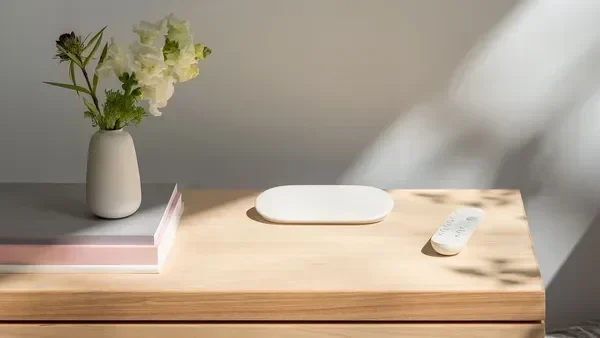Google officially unveiled its new Google TV Streamer, while also announcing the discontinuation of the Chromecast. The familiar dongle format will be left behind, giving way to a larger device with more ports and a higher price tag. Google has stated that Chromecasts will remain available “while supplies last.” Additionally, Google has affirmed that it will continue to send software and security updates to its more recent devices, though it hasn’t specified which ones.
The very first Chromecast was launched in 2013. Its goal was to allow users to stream content from their phones to their TVs, all wirelessly. Over the years, the device improved and offered streaming services like Netflix. This allowed users to “transform” their TV into a smart TV to access various platforms. Google says the reason for abandoning the Chromecast brand is that, since 2013, smart TVs have rendered much of the original functionality of the device obsolete. This makes sense, as both the Android TV line and Google Cast are integrated into millions of televisions. Google believes that its streaming hardware now needs to offer something different.
The most recent update for Chromecast was the release of Chromecast with Google TV in 2022, a popular all-in-one streaming hub that many found affordable and convenient. However, the new Google TV Streamer will replace it, and it comes with a significant price increase, closer to other TV boxes like the Apple TV, with a price tag of $99.99.
The design of this new device follows the design line that Google has been working on in recent years in its routers, cameras, speakers, and Pixel Tablet. Although they presented two variants, only the white version will be available in some markets. As seen in the images, it’s a small disc with two connections: one for the TV’s HDMI (2.1) and another for the Ethernet cable, in case you don’t want to connect only via Wi-Fi and prefer a more stable signal.
Similar Posts
The remote control has been redesigned, though it retains the essence of the previous edition. That doesn’t mean there aren’t any new features. For one, a customizable button has been included, which can be used to open the home automation control panel or your favorite streaming service. Additionally, a localization system has been included. Now, simply asking the Google Assistant where the remote is will make it emit a sound. There’s also an option to activate this feature through a physical button on the back of the TV Box.
The operating system will once again be Google TV, though it will come with new features. The company hasn’t missed the opportunity to integrate its artificial intelligence into this device. In this case, Gemini will automatically dive into your streaming services and video platforms to generate content recommendations based on your tastes. Additionally, it will offer text summaries of seasons or analyze reviews and opinions from the internet about a particular series or movie, summarizing them to help you decide whether to binge-watch or not. The AI will also be used to generate custom wallpapers for when the system is on standby. If this doesn’t convince you, you can always choose from one of the preloaded photos or one from your gallery.
Google claims that the processor improves performance compared to the previous version by 22%. The RAM has doubled to 4 GB, and the internal memory has been increased to offer 32 GB of storage. This upgrade was highly requested, as some Fire TV Sticks at a similar or lower price outperformed the latest Chromecast in terms of power. The image quality offered by the Google TV Streamer is 4K, and the device is compatible with HDR10, HDR10+, Dolby Vision, Dolby Atmos, as well as Dolby Digital and Digital.
Google wants this TV Streamer to become a hub for home automation. It’s compatible with the Matter protocol and includes a Thread router. Users will now be able to view their devices on the TV screen and control them from there, with the remote or through Google Assistant. You can turn on lamps, control the temperature, activate the robot vacuum, or view the feed from your smart cameras or doorbells. Additionally, they’ve created a floating side panel in case someone rings the doorbell or you want to turn a lamp on or off while you’re watching a series or movie, so you don’t have to pause the playback and can handle it with a quick glance.
Now, thanks to Gemini, users will be able to ask things like whether the garden door was closed or where the kids left their bikes. This AI will analyze the history from the web cameras if the user has them activated and will be able to answer these queries by text or voice. You will also be able to create routines easily by asking in natural language. Simply ask it to turn off the lights and turn on the thermostat at a certain time, and it will create the rule. Gemini will also power a more user-friendly version of Assistant. In addition to introducing new voices, this model will allow users to ask and request things in their natural way of speaking, without having to rephrase or use activation commands constantly. These updates won’t be available until the end of the year and will first be rolled out to Nest Aware subscribers.






